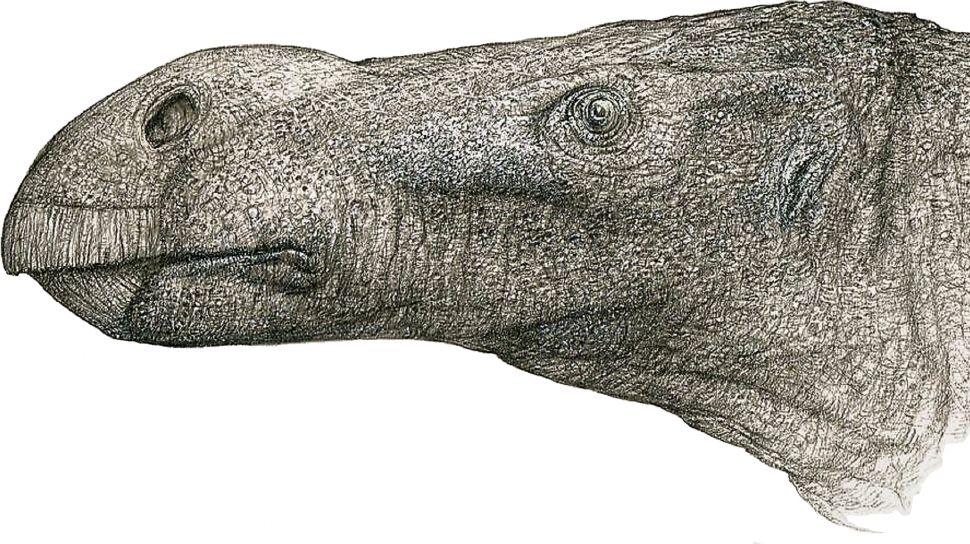Suara.com – Species dinosaur a new big nose has been discovered on the Isle of Wigh by a very experienced doctor.
At that time lockdown and he rummaged through an old box of prehistoric bones.
Over the past century, every iguanodon bone found on the island, known as one of the richest regions in Europe for dinosaur fossils, has been designated as one of two species.
Although this discovery spans a period of over millions of years during the Early Cretaceous (Cretaceous), all larger bones are thought to belong to the iconic Iguanodon bernissartensis.
Also Read:
28 New Species of Snout Beetle Found in Sulawesi
While the slimmer fossil is designated as belonging to Mantellisaurus atherfieldensis.
But Jeremy Lockwood, a doctor for 30 years, is skeptical of this long-standing tradition.
Now studying for his PhD in paleontology at the University of Portsmouth, he decided to catalog every iguanodon bone on the Isle of Wight, at London’s Museum of Natural History and the Sandown Dinosaur Island Museum.
“I was convinced that subtle differences between the bones would reveal new species, so I started measuring, photographing and studying the anatomy of each bone,” says Dr Lockwood.
“My background is medicine, so I’ve studied anatomy and am always surprised by the fact that the bones we find in humans all look exactly the same,” he added.
Also Read:
A Dinosaur Suddenly Appears at the UN General Assembly, Deliver This Message
“I’ve seen dinosaur bones that are reported to be from the same species, but I’m confused as to why they look so different,” he said Independent, Monday (15/11/2021).
After four years of spending time going through the “bone boxes”, he decided that during the lockdown last year to reconstruct the skull of a specimen that has been in storage since 1978.
“I was surprised, I saw the tip of his nose was round,” he said.
“This discovery makes it one of the days lockdown the happiest because it is a sign that there really is something different about this particular dinosaur from the Isle of Wight.”
Combined with the fact that the specimen had 28 teeth, while Mantellisaurus usually had 23 or 24.
“The unique shape of the nose and a few other minor differences make it very clear as a new species,” said Dr Lockwood.
In a study published in the Journal of Systematic Palaeontology, Dr Lockwood has now named a new species Brightstoneous simmondsi.
![A new species of big-nosed dinosaur, Brightstoneous simmondsi. [Journal of Systematic Palaeontology]](https://media.suara.com/pictures/653x366/2021/11/15/25249-spesies-baru-dinosaurus-berhidung-besar-brightstoneous-simmondsi.jpg)
It is named after the village of Brightstone, close to the excavation site and in honor of amateur collector Keith Simmonds, who discovered the specimen in 1978.
Brightstoneous herbivore weighs 900 kilograms and is about eight meters long.
A few weeks ago, researchers announced the existence of two large and previously unknown dinosaur predators that also lived on the Isle of Wight.
These two meat eaters were Spinosaurs, each as large as a school bus, and may have coexisted during the Cretaceous period.
The island had a subtropical environment and was located roughly where Gibraltar is today.
Given the nature of the discovery, Dr Lockwood believes there may be “much more” new discoveries to come.
“We can see more new species. It seems very unlikely to have two animals that are exactly the same for millions of years without change.”
![A new species of big-nosed dinosaur, Brightstoneous simmondsi. [Journal of Systematic Palaeontology]](https://media.suara.com/pictures/653x366/2021/11/15/29534-spesies-baru-dinosaurus-berhidung-besar-brightstoneous-simmondsi.jpg)
Dr Lockwood and his co-authors, Professor Dave Martill of the University of Portsmouth and Dr Susannah Maidment of the Natural History Museum, argue that this discovery warrants further reassessment of previous findings from the Isle of Wight.
– .

![This is what pensions are supposed to be in 2022 after indexation. See the latest calculations and rates! [15.11.21 r.] This is what pensions are supposed to be in 2022 after indexation. See the latest calculations and rates! [15.11.21 r.]](https://d-art.ppstatic.pl/kadry/k/r/1/bd/5f/618e79617ee8d_o_original.jpg)
